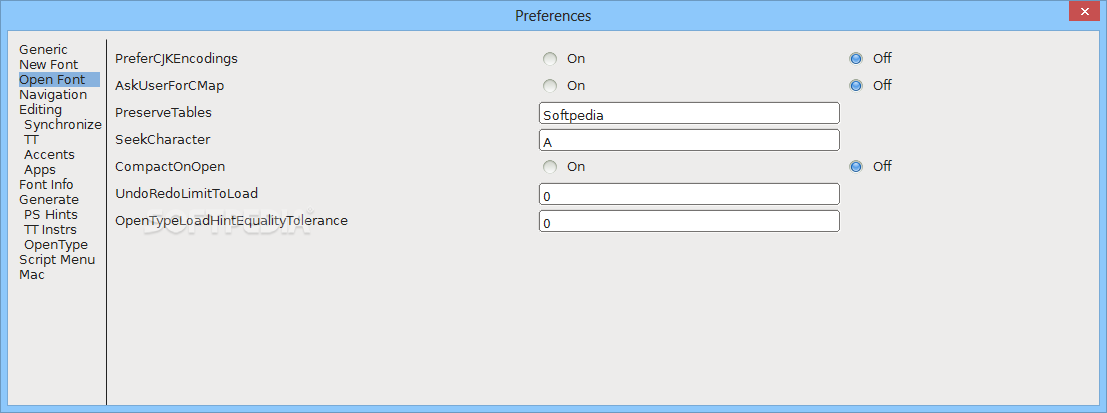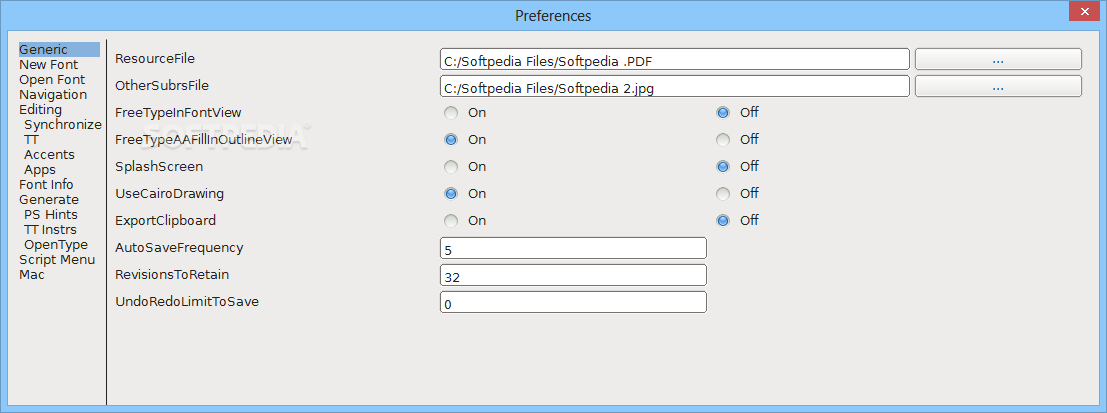

There is rarely a reason that a control point should lie outside of the curve, so these instances usually signify accidents. This test will look for control points lying beyond the endpoints of the curve segment on which they reside. In the “Points” tab, select Control points beyond spline. The tests listed above will ensure that your font installs and renders correctly according to the rules set out by the various font formats, but there are a handful of others tests you should consider adding - especially at the end of the design process - simply because they check for common conventions followed by most modern typography. Make life easier for your users: test for good behavior The problems they guard against are uncommon, but all will cause the font to be considered invalid by one or more computer system, so they are worth including. These tests look for missing glyph names, substitution rules that refer to non-existent glyphs, and other problems related to glyph names or OpenType features. Similarly, select all of the tests in the “ATT” tab. All of the tests in the “Refs” tab are mandatory for at least one common output format, and all are good ideas.
Fontforge glossary plus#
For example, an accented letter includes a reference to the original (unaccented) letter, plus a reference to the accent character. These checks all relate to references, in which a glyph includes paths from another glyph. In addition, if a glyph has any self-intersecting paths then FontForge cannot perform the Check outermost paths clockwise test. It is a very good idea to check Intersecting paths as well although modern font formats can support two intersecting paths, curves that insect with themselves are not allowed. These are both mandatory features in all fonts the first looks for any curves that are not closed shapes, and the second makes sure that the outer curves of every glyph are traced in clockwise order. In the “Paths” tab, select the options Open paths and Check outermost paths clockwise. Not every font output format requires this behavior, but some do. This test makes sure that all of the points in each glyph (including both on-curve points and control points) have integer coordinates. In the “Points” tab, select the Non-Integral Coordinates test. First things first: test for required features Several of the other tests provide feedback and guidance to you during the design process, and are worth exploring for that reason. But you should check that your font passes those tests that examine the glyphs for required features, and several tests that look for optional but commonly-expected behavior. Not every check is necessary some apply only to specific scripts or languages (such as those in the “CID” tab), while others apply only to specific, optional font features (such as the checks in the references tab). The problems that the Find Problems tool can look for are sorted into these eight groups: When you click the OK button, the tool will examine all of the selected glyphs, and report any problems it finds in a dialog box. You can select which problems you are interested in looking for by checking the checkbox next to each, and in some cases providing a numeric value to check the font against. The tool presents you with an assortment of potential problems in eight separate tabs. You must first select one or more glyphs - either from the font view, the outline view, or the metrics view - then open the Find Problems tool. The first tool is called Find Problems, and is found under the Element menu. Validating your font to eliminate these errors will thus not only ensure that it can be installed and enjoyed by users, but also that the finished project exhibits polish. Finally, there are stylistic errors that are not technically incorrect, but that you will still want to repair - such as lines that are intended to be perfectly horizontal or vertical, but are accidentally slightly off-kilter.įontForge offers tools that you can use to locate (and, in many cases, repair) all three categories of problems. An example of this type of issue is that all of the points on a curve should have coordinates that are integers. The various font file formats also expect glyphs to adhere to certain rules that simplify placing the text on screen, and fonts that break the rules can cause unexpected problems.

For example, curves that intersect themselves will not render correctly because they do not have a “inside” and “outside”. Fonts can have technical errors that prevent them from working or displaying correctly.
Fontforge glossary install#
In a perfect world, your font would be ready to build and install on any modern computer without any special effort, but reality is messier - particularly during the design process.


 0 kommentar(er)
0 kommentar(er)
